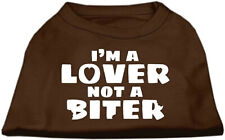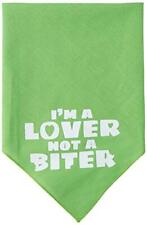FAQ: Feeding Bearded Dragons

What do they eat?
They eat bugs as well as greens. As they reach maturity they will eat more greens and fewer bugs. You can also feed them prepared foods. I use Rep-cal pellets and supplement the greens with T-Rex VGF or VMF. Because I use prepared foods that contain everything a Bearded Dragon needs, I do not use additional supplements. Too much supplements can be as bad as not enough.
How much do they eat?
It depends on their size and their diet. When they’re a few days old, they can eat a few crix a day. As they age, it can go upwards of 50 crix a day. Feed crix a few at a time for 10 minutes until they stop eating. If you feed pellets and greens with supplements, crix can be reduced or eliminated.
My Bearded Dragon has lost weight. How do I fatten him up?
The first thing is to find out why he lost weight. Once the problem is solved, silkworms and roaches are a good staple to help put on weight. You can also use rep-cal pellets and/or T-rex VGF mixed with a probiotic and water and mixed into a slurry. This can be drawn into a syringe and fed to your Bearded Dragon as a complete food. Nothing else is needed. It is balanced properly for Bearded Dragons.
What about hand feeding them?
They can get spoiled and very lazy. If the food always comes to them they won’t go looking for it. You may want to put your BD next to a bowl and then start to feed it. After the first couple pieces, drop the rest in the bowl in front of it. Hand feeding can be a good way to help a nervous BD get over a fear of people.
Do I have to feed crickets and bugs?
Young Bearded Dragons need protein to grow. You can replace crix with plant protein found in prepared foods like Rep-cal pellets and T-rex VGF. You can also use roaches and silkworms in place of crix. No mealworms. Superworms are only for a treat. While all animal protein can be replaced by prepared foods, I prefer giving my Bearded Dragons the option of live food to increase their choices and variety of diet. As they get older they need less and less protein.
How big of a cricket should I feed my Bearded Dragon?
Crix should be able to fit between your Bearded Dragons eyes and no longer than the length of his head
Do I need to do anything special to the crickets before giving them to my Bearded Dragon?
Crix need to be fed properly to add more nutrition and make them plump and full of water. I have found it best to feed them fruit and veggie scraps from my Bearded Dragons food. They can also get moistened pellets. Even more important than what goes in a cricket is what goes on the crickets. You can use a balancer like ICB from T-Rex. This helps balance the phosphorus:calcium ratio. It can be used for every feeding for the life of the Bearded Dragon. Using calcium and vitamin supplements can also be used in place of the ICB. Never use both!
*most cricket farms use a special feed for crix. It has been reported that moldy feed can make the crix toxic. If you opt to use a cricket feed, be careful.
Can crickets eat my Bearded Dragon?
Yes, leftover crix can do a lot of damage to a Bearded Dragon if left in overnight.
What kind of worms can I feed my Bearded Dragon?
The only worms I recommend as a staple are silk worms. You can offer super worms as a treat to Bearded Dragons that are over 12". The chitin (exoskeleton) is hard to digest. Freshly shed worms (white in color) are best as they digest the easiest. Meal worms are even harder to digest and I don’t recommend them at all. Wax worms are high in fat and can lead to liver problems.
Can worms eat their way out of my Bearded Dragon?
No, it’s an urban legend.
Can I feed my Bearded Dragon bugs from my garden?
It is safer not to. You don’t know what they may have been exposed to. Pesticides, germs, parasites… can all have a deadly effect on your Bearded Dragon. Never feed luminous bugs (fireflies) as they are poisonous.
Does my Bearded Dragon need a water bowl?
Most of the dragon’s hydration is supplied by the high vegetation diet and therefore water bowls are not a necessity for drinking. If you do use a water bowl, it should be a bowl or dish shallow enough for your lizard to see easily into and drink out of. Additionally, make sure that it is not too deep so as to make it hard for the dragon to get in and out, especially with babies. It should be heavy enough not to tip over. Sometimes Bearded Dragons will never learn how to drink out of a dish of standing water.
How can I tell if my Bearded Dragon is getting enough to drink?
See to it that your dragon gets enough fluid. The Bearded Dragons skin will appear wrinkled and loose if it is dehydrated and it will be more difficult for it to poop. You can see if they will drink water from an eye dropper by dripping water on their snout. They will usually lap it up. If you notice your Bearded Dragon seems dehydrated you can also offer pedialyte. This will help replace electrolytes. Remember that once pedialyte is opened it must be used within 24-48 hours. You can always make ice cubes from it to prevent it from losing its beneficial properties. Pedialyte and Gatorade do contain sugar so use it in moderation.
Does my Bearded Dragon need to bathe?
Letting your Bearded Dragon soak in a bath every few days will often help keep them happy and hydrated. It is also helpful in the shedding process. Fill the tub with warm water (85? to 95?) just enough to cover the dragon’s back if he’s laying down flat. 20 minutes at a time should do it. Never leave them unsupervised. Your bearded will also enjoy a shower occasionally. A light misting with water will also help keep the skin humidified to make it easier to shed. Keep in mind that if your Bearded Dragon is not permitted to dry out under a basking light, it will be more difficult to shed as well. The tank, however, should never be damp. Avoid humidity over 20%. Humid conditions higher than this are okay for the short term only. High humidity has been linked to certain respiratory diseases in predominately desert and arid area animals.
How do I get my Bearded Dragon to eat greens?
Bearded Dragons will naturally eat more greens and less animal protein as they reach maturity. I use T-rex VGF as a salad dust. That makes it more appetizing. You can also try hand feeding. They are attracted by movement so moving the leaves around or dropping them into the bowl may help. Another method is to chop the salad into small pieces and put worms or other bugs in the salad.
How do I get my Bearded Dragon to eat pellets?
There are several different brands of pellets. Some Bearded Dragons show a preference for different brands, sometimes you have to trick them to get them started. Put a large paper plate in the cage and bounce the pellets off it, drop them in one at a time. BDs are attracted by movement. You can also try soaking them in different juices (no sugar added) then bounce them in. Offer the pellets first thing before other foods about an hour after lights on and then again throughout the day. Don’t starve him if he won’t eat them but try for a few days with only offering pellets. You can also feed moisten pellets to the crix about 1 hour before you feed them to your BD. The scent of the pellets will get on them and he may learn to associate the smell.
What are supplements? Do I need to use them?
Supplements are vitamins and minerals, especially calcium and D3. YES you must use them for a healthy Bearded Dragon. You can add them to salad or with live prey, or you can use dry food such as pellets that contain a full balanced meal. I feed Rep-cal pellets for breakfast and salad dusted with T-rex VGF or VMF for lunch.





